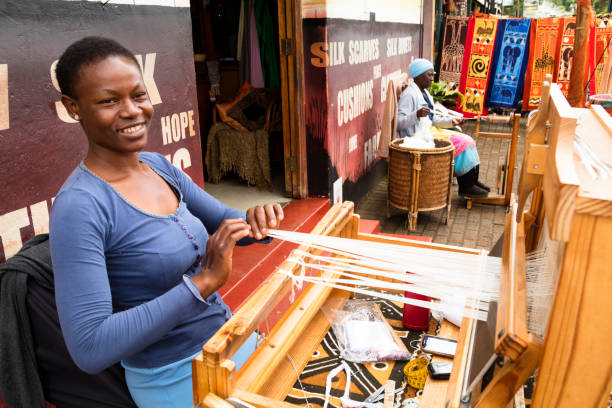
Local people in Namibia’s north-west give the tall palm tree the name Makalani. Makalani has a difficult meaning, but it is widely used in Namibia. The tree, also known as vegetable ivory palms, can produce up to 2,000 fruits in four seasons. Each fruit contains a nut. The tree is not harmed by harvesting the hard ivory-colored seeds.
The nuts are soft and shave easily with steel tools but hard enough to keep the delicately carved details. The nuts can be polished without losing their point after carving. These properties are similar to those of ivory and shell, which are used in the production of valuable objects such as buttons and cameos.
Namibians sell objects made of nuts to tourists. This is a great source of income for a country struggling with high rates of unemployment.
As the Tagua nut, the seed of Phytelephas aequatorialis, shows in Ecuador, the demand for similar products is on the rise. Add-ons like buttons are also used in the fashion industry. Tagua nuts, also known as vegetable ivory, can be made into buttons to embellish fashion garments. Minor detailing on car interiors could be added as a design feature.
I discovered that many of the other techniques for crafting the Ecuadorian nuts could be applied to the Makalani nuts as well.
I worked with a Makalani master craftsman to create a project that looked at ways to develop the artisan craft using rich indigenous knowledge. As a jewelry designer with academic training, I could offer different jewelry techniques. To understand the material, the master craftsman’s native knowledge was used.
The project raised questions about commercialization and the use of indigenous knowledge.
Research by experiments
We tried out different classic jewelry designs. This included dyeing the material locally with dyes. The dyes used had beetroot dyes and a vibrant pink (magenta) known as Otjize. Otjize, a natural shade, is used by Oshiwambo women to dye fabric and shells.
The Oshiwambo live mostly in the northern part of Namibia. Their traditional dress called an Ondelela, creates a distinctive aesthetic. The dye’s origins are a mystery, as none of these women were able to (or wanted) to reveal what it was made of.
The sessions were a huge success. The new techniques excited many artisans. Many artisans had never seen nuts dyed.
However, I was worried about the inevitable impact of the project on the social fabric of the local communities. I wondered if local crafts, when organized like an industry, would not dissolve eventually.
The master craftsman expressed his concern about the exclusion from the commercialization of their craft of the artisans. In the past, crafters were marginalized because of the development of their art.
I needed not to create a hierarchy with the local craftspeople. This created an atmosphere of trust and learning through experimentation.
Each step was meticulously documented. Detail-oriented attention to detail allowed for a deeper understanding of the needs and suggestions of the artisans. This avoided the trap of trying to apply “design solutions” for a “local issue.”
But, for me, questions remained. Will mass commercialization of art threaten the traditional craft practices that are the essence of indigenous knowledge?
Thomas Thurner, Research chair for Innovation in Society Cape Peninsula University of Technology, gave me some advice that reassured me:
This study provides valuable insight into the co-creation of indigenous knowledge with academic knowledge. The marriage of both could lead to new ways for things to work in a way that is both sustainable and socially acceptable.
More is better, but how much more?
Today, the product is developed locally using the skills of the artisans. Unresolved was the question of whether to commercialize the operations of crafters. Crafters hadn’t considered the possibility of manufacturing their products.
Industrial production techniques would be required to increase production. This would, however, lead to an unavoidable separation between the craftsperson and the finished product. Crafters were concerned about how they could retain the most benefits from sharing their indigenous knowledge and remain a vital (and profitable) part of the production process.
The opening of a commercial route will also have an added benefit: it will save a declining tree population. Palms used to cover the north-central region of Namibia, but now, many of them have disappeared due to palm sap harvesting.
